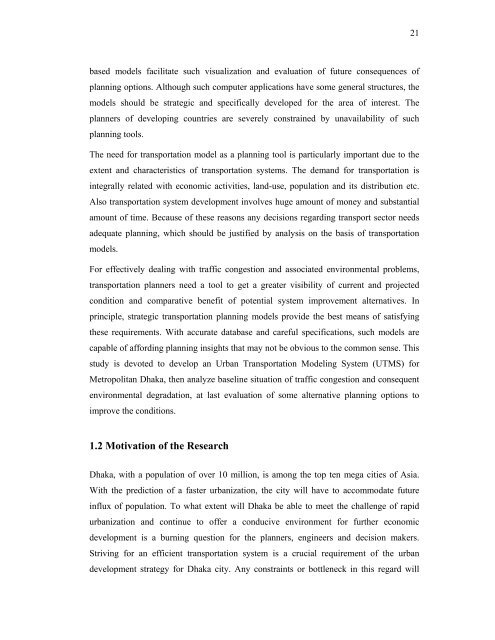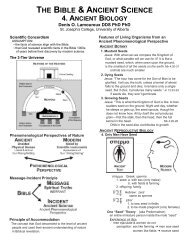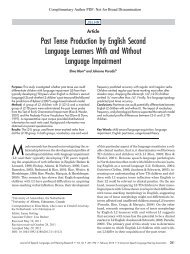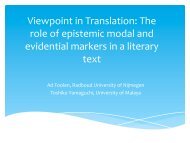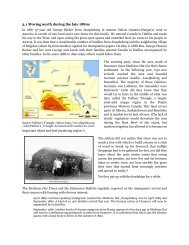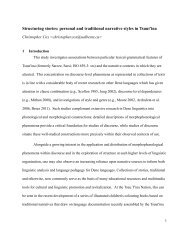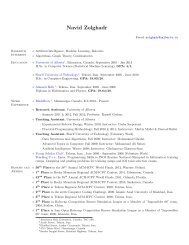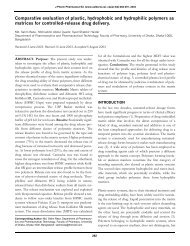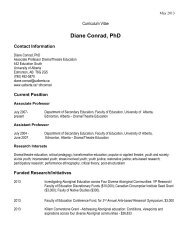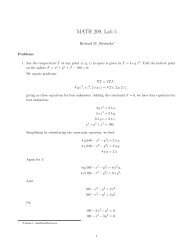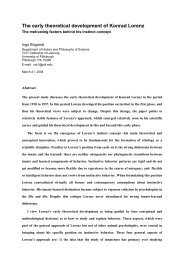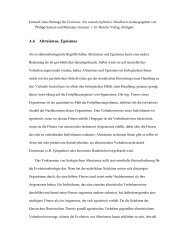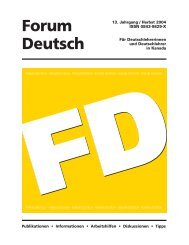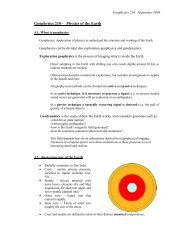Evaluation of Planning Options to Alleviate Traffic Congestion and ...
Evaluation of Planning Options to Alleviate Traffic Congestion and ...
Evaluation of Planning Options to Alleviate Traffic Congestion and ...
Create successful ePaper yourself
Turn your PDF publications into a flip-book with our unique Google optimized e-Paper software.
21<br />
based models facilitate such visualization <strong>and</strong> evaluation <strong>of</strong> future consequences <strong>of</strong><br />
planning options. Although such computer applications have some general structures, the<br />
models should be strategic <strong>and</strong> specifically developed for the area <strong>of</strong> interest. The<br />
planners <strong>of</strong> developing countries are severely constrained by unavailability <strong>of</strong> such<br />
planning <strong>to</strong>ols.<br />
The need for transportation model as a planning <strong>to</strong>ol is particularly important due <strong>to</strong> the<br />
extent <strong>and</strong> characteristics <strong>of</strong> transportation systems. The dem<strong>and</strong> for transportation is<br />
integrally related with economic activities, l<strong>and</strong>-use, population <strong>and</strong> its distribution etc.<br />
Also transportation system development involves huge amount <strong>of</strong> money <strong>and</strong> substantial<br />
amount <strong>of</strong> time. Because <strong>of</strong> these reasons any decisions regarding transport sec<strong>to</strong>r needs<br />
adequate planning, which should be justified by analysis on the basis <strong>of</strong> transportation<br />
models.<br />
For effectively dealing with traffic congestion <strong>and</strong> associated environmental problems,<br />
transportation planners need a <strong>to</strong>ol <strong>to</strong> get a greater visibility <strong>of</strong> current <strong>and</strong> projected<br />
condition <strong>and</strong> comparative benefit <strong>of</strong> potential system improvement alternatives. In<br />
principle, strategic transportation planning models provide the best means <strong>of</strong> satisfying<br />
these requirements. With accurate database <strong>and</strong> careful specifications, such models are<br />
capable <strong>of</strong> affording planning insights that may not be obvious <strong>to</strong> the common sense. This<br />
study is devoted <strong>to</strong> develop an Urban Transportation Modeling System (UTMS) for<br />
Metropolitan Dhaka, then analyze baseline situation <strong>of</strong> traffic congestion <strong>and</strong> consequent<br />
environmental degradation, at last evaluation <strong>of</strong> some alternative planning options <strong>to</strong><br />
improve the conditions.<br />
1.2 Motivation <strong>of</strong> the Research<br />
Dhaka, with a population <strong>of</strong> over 10 million, is among the <strong>to</strong>p ten mega cities <strong>of</strong> Asia.<br />
With the prediction <strong>of</strong> a faster urbanization, the city will have <strong>to</strong> accommodate future<br />
influx <strong>of</strong> population. To what extent will Dhaka be able <strong>to</strong> meet the challenge <strong>of</strong> rapid<br />
urbanization <strong>and</strong> continue <strong>to</strong> <strong>of</strong>fer a conducive environment for further economic<br />
development is a burning question for the planners, engineers <strong>and</strong> decision makers.<br />
Striving for an efficient transportation system is a crucial requirement <strong>of</strong> the urban<br />
development strategy for Dhaka city. Any constraints or bottleneck in this regard will


